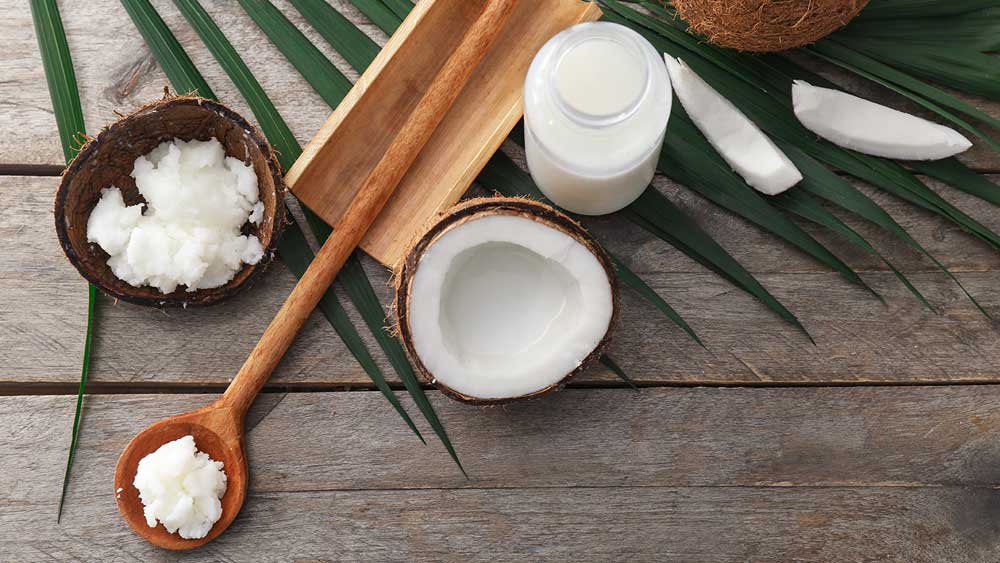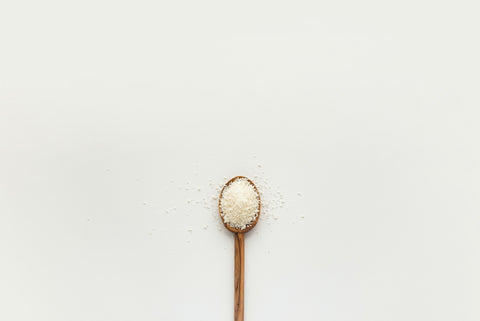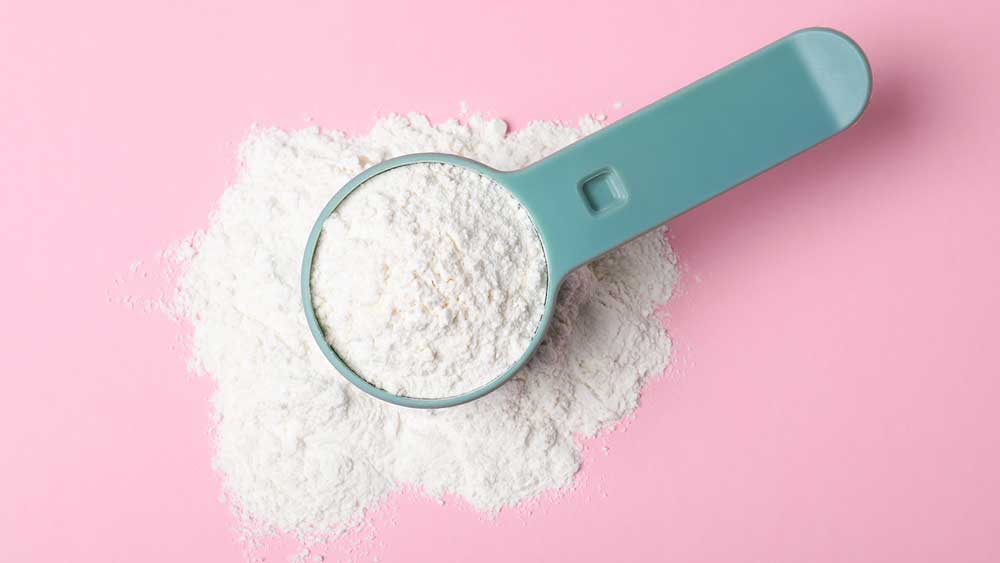
Glyceryl stearate
- Derived from: coconut
- Pronunciation: (\ˈglis-rəl\ \stē-ə-ˌrāt\)
- Type: Naturally-derived
- Other names: monostearate
What Is Glyceryl stearate?

Glyceryl stearate, also called glyceryl monostearate, is a white or pale yellow waxy substance derived from palm kernel, olives, or coconuts. It is a common monoglyceride that aids in mixing water and oil together and is used as emulsifier and emollient in cosmetics. It can be found in skincare and haircare as a moisturizer and for its antistatic properties.
Glyceryl stearate’s Chemical Structure

Glyceryl stearate has a molecular weight of 358.6 g/mol and is insoluble in water but soluble in ethanol. It is commonly used as an emulsifier in cosmetics and food. It is also a natural product found in organisms such as Aristolochia cucurbitifolia and Lobelia longisepala.
What Does Glyceryl stearate Do in Our products?

Glyceryl stearate is an emollient that keeps products blended together; it can also be a surfactant, emulsifier, and thickener in food — often it’s used as a dough conditioner and to keep things from going stale.[1] In our products, however, glyceryl stearate is used for its most common purpose — to bind moisture to the skin. For this reason, it is a common ingredient in thousands of cosmetic products, including lotions, makeup, skin cleansers, and other items.[2,3]
Skincare
In skincare products, Glyceryl stearate can be found in lotions, powders, cleansers, and creams, as well as sunscreen and conditioners. As a skin conditioning agent, it stabilizes products and decreases water evaporation, making it resistant to freezing and keeping a crust from forming on its surface. For body lotion, face cream, and sunscreens, the safest recommended maximum dosage is 1.5-2.5%.
Haircare
In haircare products, Glyceryl stearate traps moisture and keeps hair from drying out and becoming damaged. It also adds texture and thickness to haircare products such as oil, wax, and balms that do not contain water. In softeners, conditioners, and thickeners, the safest recommended maximum dosage is 2-5%.
Common Concerns Regarding Glyceryl stearate
Learn more about the risk levels of common concerns with this ingredient.
- Cancer: low risk
- Allergies: low risk
- Development and reproductive toxicity: low risk
- Environmental impact: low
- Organ system toxicity: low risk
- Use restrictions: low
How Glyceryl stearate Is Made

Glyceryl stearate is formed through a reaction of glycerin with stearic acid, which is a fatty acid that comes from animal and vegetable fats and oils. Glyceryl stearate SE, the self-emulsifying form of the substance, is made by reacting an excess of stearic acid with glycerin. The excess stearic acid is then reacted with potassium and/or sodium hydroxide. That produces a substance that contains glyceryl stearate, potassium stearate, and/or sodium stearate.[4]
Is Glyceryl stearate safe?

Learn the effects of this ingredient on your body as well as its environmental impact.
Effects on Health
The FDA lists Glyceryl stearate as being safe to be used as a food additive. When used at a concentration of up to 100%, it can cause eye irritation, but generally it is considered safe to be used in skincare, haircare, and cosmetics.
Environmental Impact
The ingredient is not bioaccumulative and is not a suspected environmental toxin. It is also readily biodegradable and can be derived from sustainable raw materials.
Glyceryl Stearate vs. Glyceryl Stearate SE

You may also see a very similar-looking ingredient called Glyceryl Stearate SE . The main difference between the two is that Glyceryl stearate S/E contains a small amount of potassium stearate and sodium, which allow it to self emulsify and not require oil and water. This results in the ingredient's stronger emulsifying properties. Similar to Glyceryl stearate, Glyceryl stearate S/E also adds texture and stability to skincare and haircare products.
Why Puracy Uses Glyceryl stearate
We use glyceryl stearate in several of our products as a moisturizer; it also forms a barrier on the skin and prevents products from feeling greasy. As an emulsifier, it also allows products to stay blended.[5] Several studies and clinical tests find that glyceryl stearate causes little or no skin or eye irritation and is not a danger in formulations that might be inhaled.[6,7,8] In addition, a number of clinical trials have found that glyceryl stearate in moisturizers can lessen symptoms and signs of atopic dermatitis, including pruritus, erythema, fissuring, and lichenification.[9] In 1982 and again in 2015, the Cosmetic Ingredient Review deemed the ingredient safe for use in cosmetics.[10] Whole Foods has deemed the ingredient acceptable in its body care quality standards.[11]
Sources
[1] Personal Care Council
[2] Personal Care Council
[3] Cosmeticsinfo.org
[4] Cosmeticsinfo.org
[5] Cosmeticsinfo.org
[6] Elder RL (ed). “Final report on the safety assessment of glyceryl stearate and glyceryl stearate/SE,” Journal of the American College of Toxicology. 1982;1(4):169-192
[7] Bárány E, Lindberg M, and Lodén M. “Unexpected skin barrier influence from nonionic emulsifiers,” International Journal of Pharmaceutics. 2-15- 2000;195(1-2):189-195
[8] Personal Care Council
[9] Food and Drug Administration
[10] Personal Care Council
[11] Whole Foods Market


























